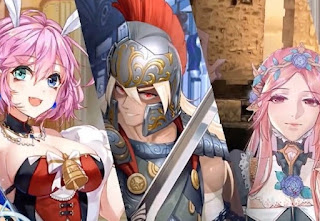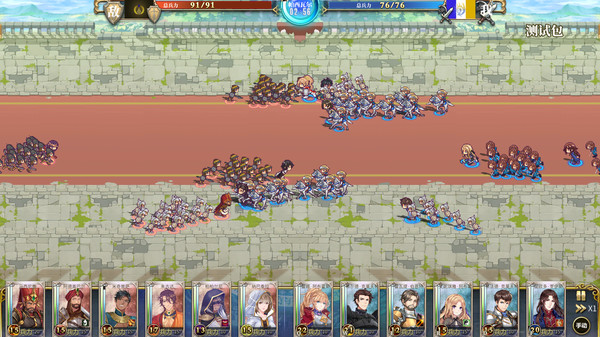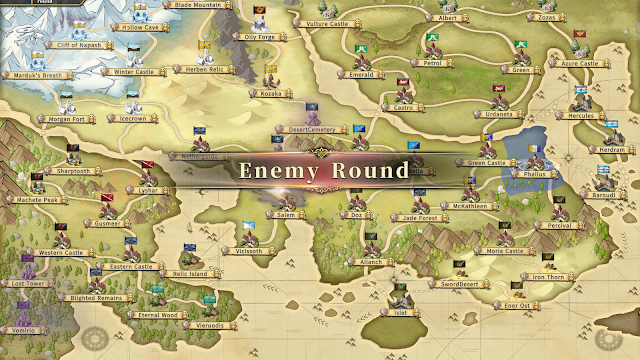Over the last couple of years, there have been few games industry-orientated things that have excited me quite like the rise of China as a development centre. They might be bitter political rivals, but China and Japan share more than a few cultural similarities. Being both ancient nations and peoples that have co-existed and interacted over thousands of years, cultural exchange was always going to happen, and from storytelling traditions to aesthetics, both countries are so much more similar than, say, America and Japan. So the emergence of China as a game development centre promises a lot of new games that suit my own preferences. The Heroic Legend of Eagarlnia is the latest, and while it is still in Early Access, it is already compelling.
I will, however, say that now that the quality of Chinese games are lifting and they’re being sold all around the world, the Chinese development industry has got to learn to appreciate the value of quality localisation. I understand that this is a paradigm shift for the local development scene, which had previously been overwhelmingly focused on the domestic market and only had a tiny few languages to support, but it’s got to change. Developers and publishers need to add “localisation” as a critical line item on the development budget. Independent developers in all other markets have learned this the hard way, and the reason is simple; localisation affects everything from the obvious (the narrative), to the less obvious things like user experience. Eagarlnia is a reasonably complex strategy game. I spent far too long puzzling over my strategic options and trying to remember how to take certain actions because they weren’t what I – a native English speaker – would have called them were I designing the same menu. You look at something like Romance of the Three Kingdoms after playing something like this, and you appreciate the effort that went into the localisation all the more, because as complex at it is, at least all those menu options use the right words for native speakers.
Eagarlnia also has a pretty interesting plot, I think. It ended up being too difficult to extrapolate meaning through the translation, so I ended up giving up, but the characters are a colourful bunch and the (I think) clandestine politics that they get up to has a lot of potential. It’s not dissimilar to Banner of the Maid in this regard; another high-quality strategy game that I really wanted to understand, but the amateurish localisation let me down at every turn. Still, unlike Banner of the Maid, Eagarlnia is Early Access, so there’s bandwidth to right this ship, so I implore the developers to please, please splash out a bit more of that cash that they’ve earned from the Early Access sales to get a more proficient localisation outfit to read through the game.
The depth in the systems here are really impressive. The AI is not overly easy to “game”, and player mistakes are very much punished. There’s a huge range of units (55) to train and go to war with, you need to keep a close eye on the domestic situation lest riots break out, and enemy strongholds take some real resources to roll over. There are a huge number of factions to play as, ranging from relatively overpowered (“easy” campaigns) through to factions in such a difficult spot that you’ll wonder if it’s possible to turn it around at all. Finally, there are some light “RPG” systems in play too, where you can go on quests and complete missions in order to earn powerful equipment that bolsters your character’s abilities in battle. With a total of 225 different characters in the game, each with their own personalities and behaviours, this is not a game where you’ll see everything within the first couple of campaigns, and it can be almost overwhelming at first (not helped by the fact that, again, the localisation in the tutorial isn’t in natural enough English to be comfortable to read.
For such an independent project, there’s a lot to love with Eagarlnia’s aesthetics and presentation. Character portraits are gorgeous, and the overworld map is simple, but clean and comfortable. Combat’s the flashiest part, with cute little chibi units dashing this way and that. It’s a bit of a mess to actually manage, because while you can pause the action to issue orders, once units are in a battle with one another there’s so much smoke and movement that it becomes hard to track what’s going on. However, where I will often skip the tactical battles of a Romance of the Three Kingdoms, or even something like Total War (the grand strategy side of these games is always more interesting to me than commanding units about), the cute little soldiers in Eagarlnia had the opposite effect and I’ve not missed a single battle, even when the odds are overwhelming one way or another.










